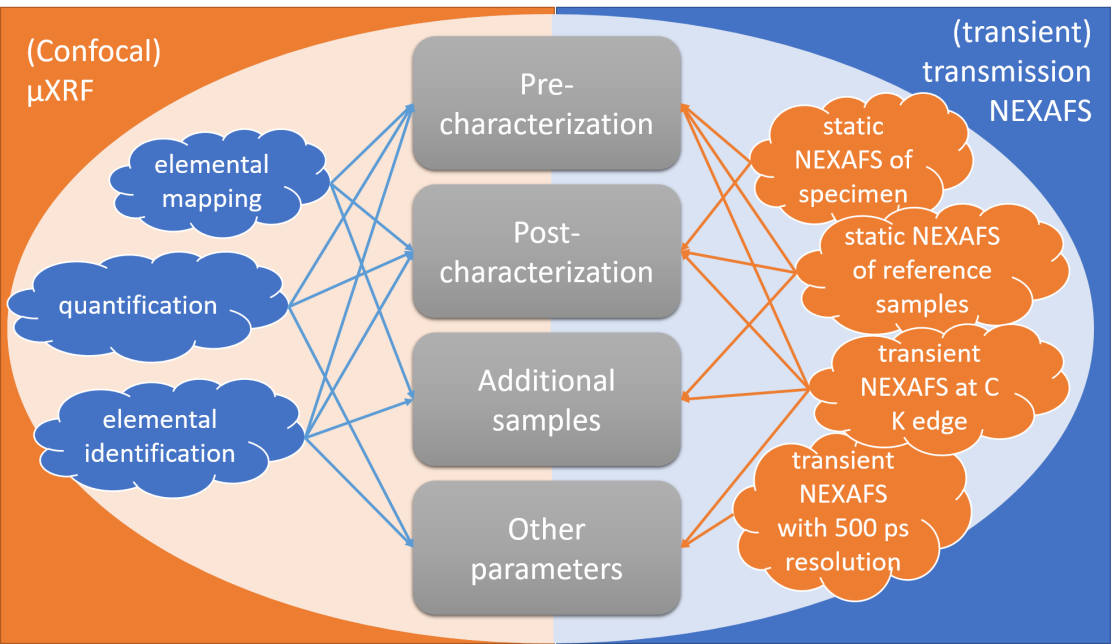Joint Research Group - SyncLab
Instrumental
The use of laboratory measurements for investigations performed at the synchrotron allows an optimized preparation and post-processing of the beamtime. In the framework of SyncLab we will offer the possibility to use experimental setups at BLiX. For the first test phase we selected setups for (confocal) micro-X-ray fluorescence spectroscopy (CµXRF) and transient X-ray absorption spectroscopy in the soft X-ray range (NEXAFS).
The scheme illustrates the advantages of combined measurements. If you have a beamtime dedicated to scattering or absorption measurements on heterogeneous samples, µXRF offers the possibility for alimental mapping to define regions of interest. For elaborate sample preparation in the biological or medical field, µXRF renders it possible to optimize the preparation procedure before the beamtime. Sample degradation during beamtime can be excluded by repeated measurements in the laboratory. For unknown samples an elemental analysis is feasible combined with quantification procedures. Through highly specialized experiments at the synchrotron fundamental questions can be answered, which then allow the investigation of a significant amount of samples in the laboratory.
Concerning transmission NEXAFS measurements, the exact same samples can be pre-characterized in respect to thickness, absorption jump or even radiation damage. Static and transient measurements with sub-ps time resolution on the samples are feasible as well as the generation of reference spectra on known materials. Measurements at different absorption edges such as the C K edge can be performed before or after the beamtime.

